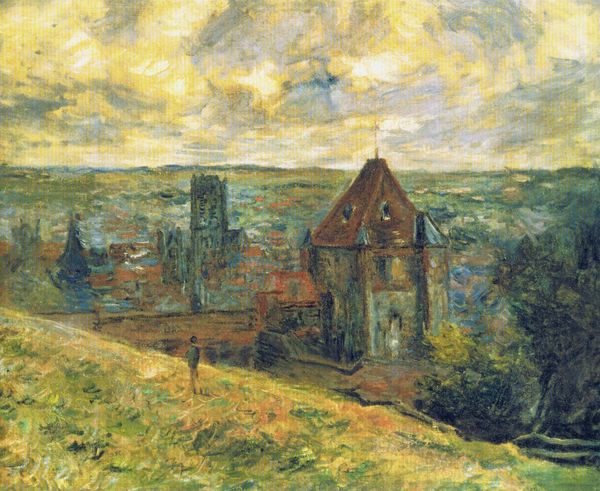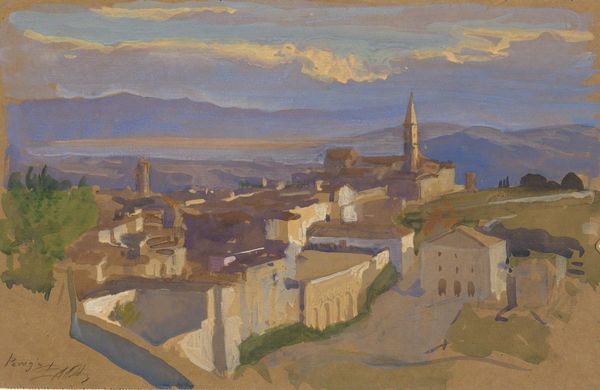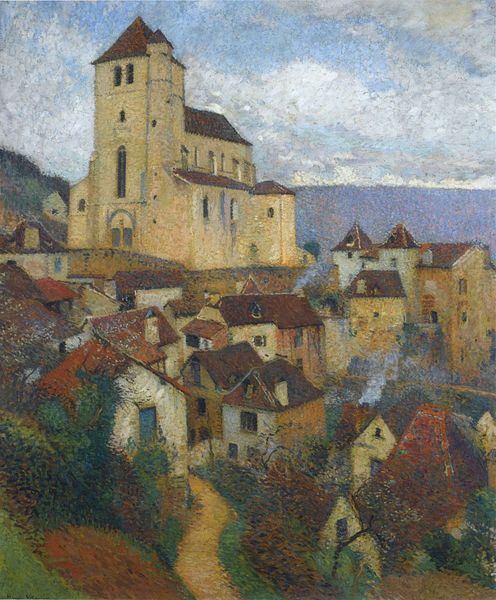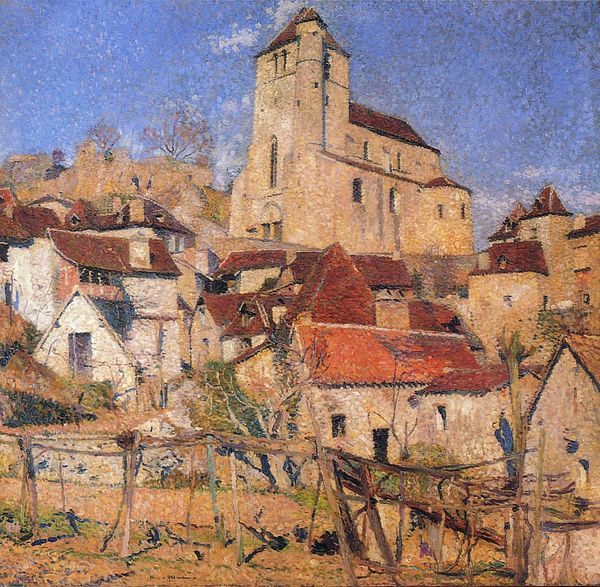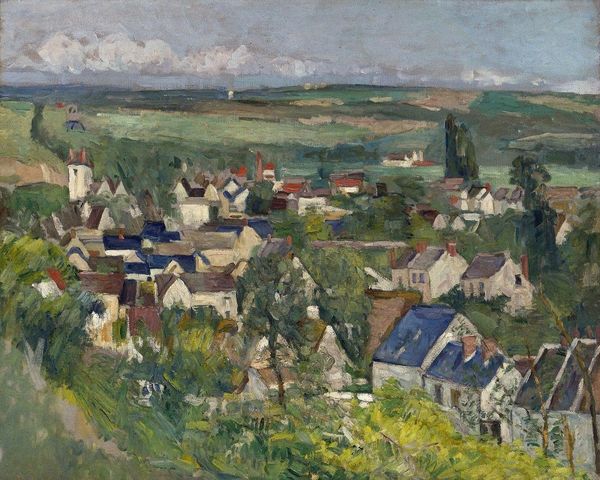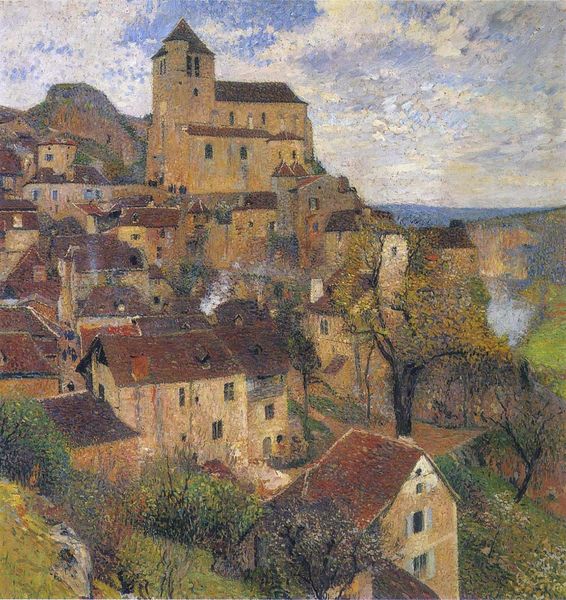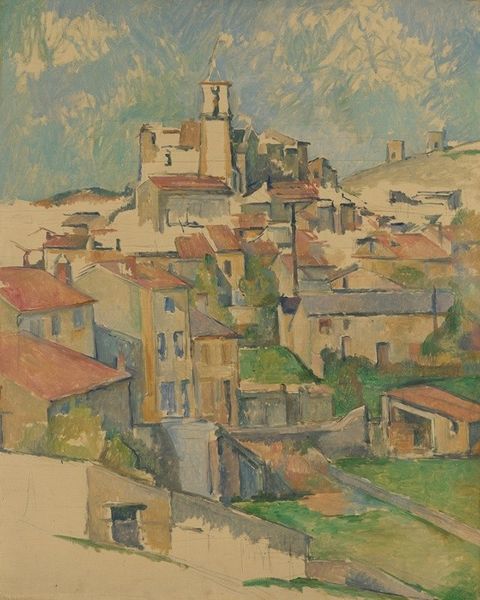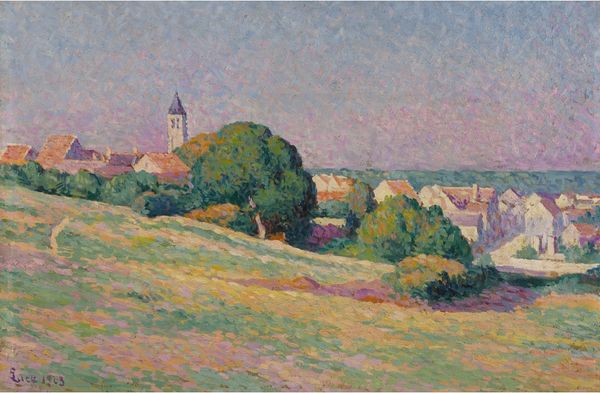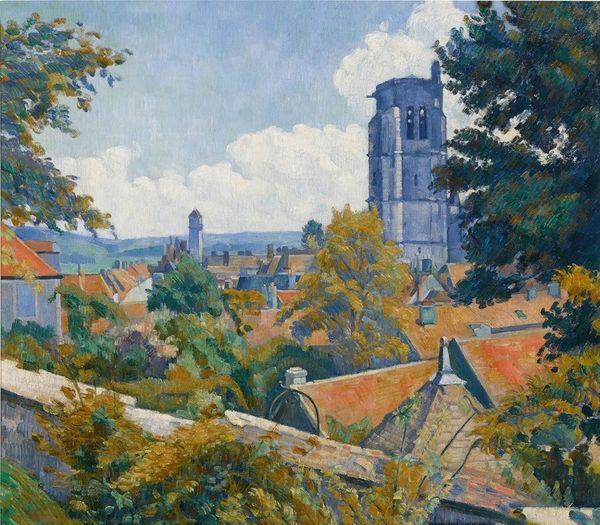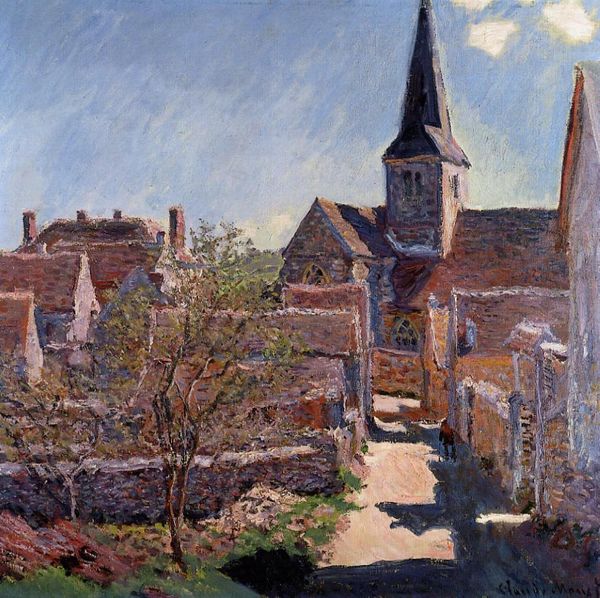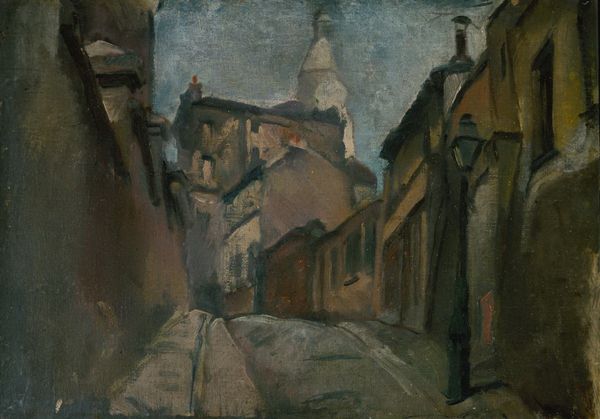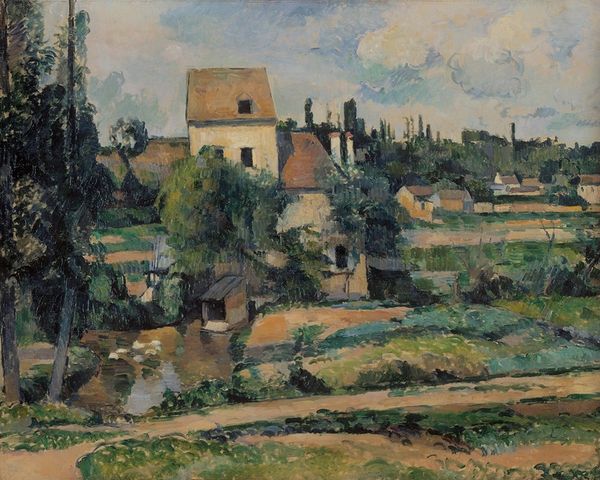
Copyright: Public Domain: Artvee
Editor: This is "Blick auf Mödling" by Carl Moll, made around 1940 using oil paint. There’s this incredible contrast between the sharp, almost geometric shape of the church and the soft, hazy cityscape beyond. What jumps out to you when you look at it? Curator: I am drawn to the prominent position of the church and how the town melts into the landscape. Moll positions the church not just as a structure, but as a sentinel or a protective presence watching over the town. Editor: That's interesting. The haze almost feels like a kind of shielding. Is there a cultural memory attached to that kind of imagery? Curator: Absolutely. Consider the time it was painted, around 1940. The rising turbulence of World War II undoubtedly impacted the artist’s perception. The church becomes a symbol of stability and endurance amidst chaos, echoing the deeply ingrained human need for refuge. The way the city is indistinct hints at vulnerability but also the resilience in everyday lives continuing beyond that edifice. Editor: So, you are seeing both fragility and strength interwoven? The heavy brushstrokes contribute to the somber mood? Curator: Indeed, the expressionistic style captures an emotional rawness, perhaps unconsciously echoing the anxieties of the time. It asks us, what sustains us when the familiar world starts to shift? It is a cultural yearning represented in built form. Editor: That makes me see the painting in a completely different light now, beyond just a landscape! Thank you! Curator: My pleasure! It is remarkable how a single image can be such a loaded vessel of memory, emotion, and hope.
Comments
No comments
Be the first to comment and join the conversation on the ultimate creative platform.
